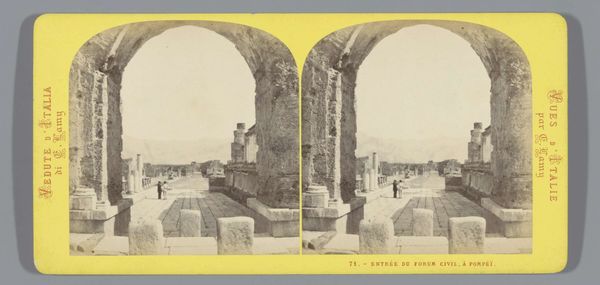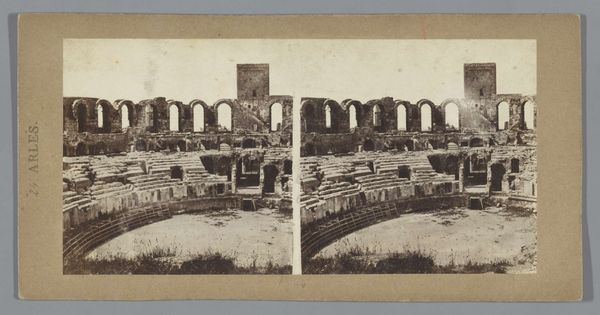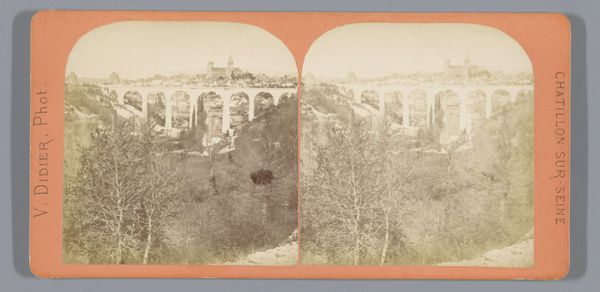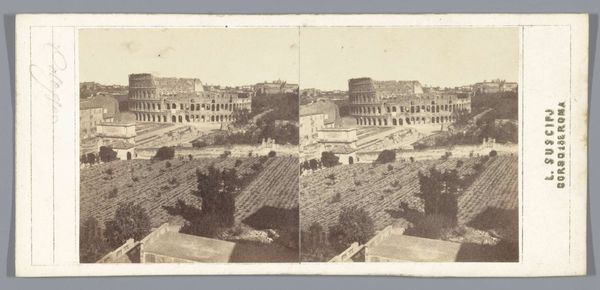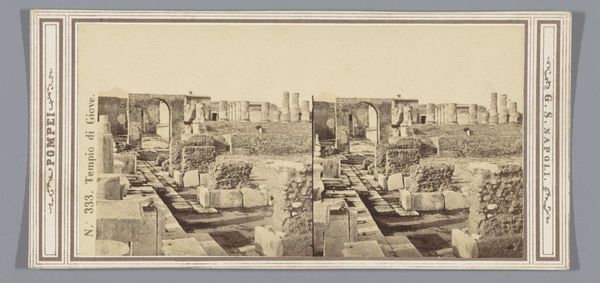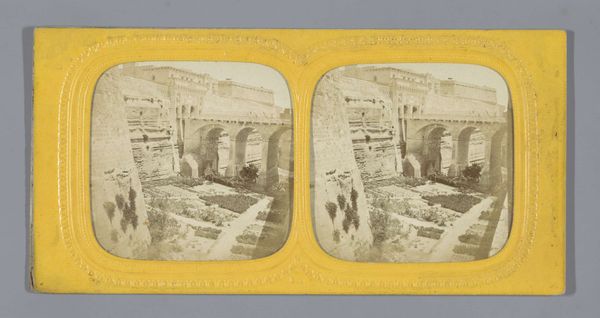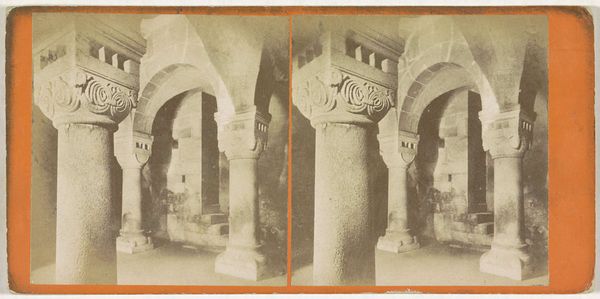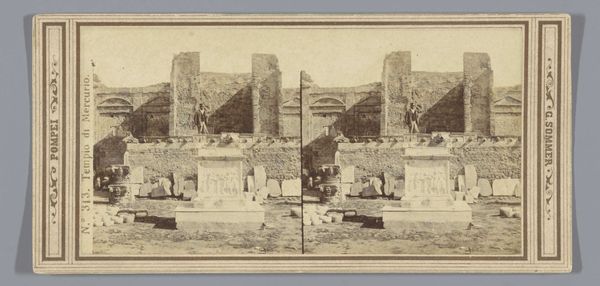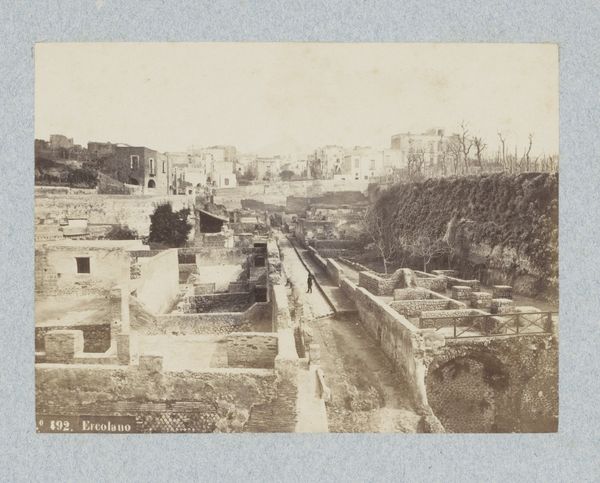
print, photography
# print
#
old engraving style
#
landscape
#
photography
#
ancient-mediterranean
#
cityscape
Dimensions: height 87 mm, width 179 mm
Copyright: Rijks Museum: Open Domain
Curator: This print captures the Roman amphitheater in Skikda, dating from the period between 1868 and 1890. Editor: It's… desolate. The sandy, faded tones lend it an air of forgotten grandeur, wouldn't you agree? The fragmented architecture suggests a time long past. Curator: Precisely. This photograph offers a layered historical narrative. Constructed during the Roman Empire, the amphitheater likely witnessed spectacles of power and subjugation, performances intended to both entertain and control the local population. Its ruin speaks to the rise and fall of empires. Editor: If we ignore the narrative aspect for a moment, observe how the photographer positions the remnants of columns and archways, it leads the viewer's eye deeper into the structure, creating a sense of spatial recession and depth. The composition itself subtly reinforces the sense of a crumbling empire, a visual echo. Curator: Certainly. And the location, Skikda, situated in present-day Algeria, highlights the global reach of Roman imperialism. It pushes us to question how cultural hegemony operates and is perpetuated through architectural remnants, particularly from a postcolonial viewpoint. Editor: Yes, and the repetitive forms, the columns… They give it a rhythm, almost like a musical score on the brink of silence. It really focuses attention on the forms themselves, on how geometry endures even when political projects collapse. Curator: This photograph acts as a poignant commentary on cultural appropriation and power dynamics that remain embedded within our collective memory. The very act of photographing it can be interpreted through the colonial gaze. Who has the authority to represent a culture's past, and for what reasons? Editor: It seems we’re each highlighting different, yet linked angles. A focus on shape and arrangement alongside an emphasis on context. It makes it more of an intellectual consideration. Curator: It offers different routes for processing its importance. I leave the interpretation with you, listener. Editor: And, together, it underscores the power of visual analysis, both the beauty of structure and form and a lens into broader historical forces.
Comments
No comments
Be the first to comment and join the conversation on the ultimate creative platform.
